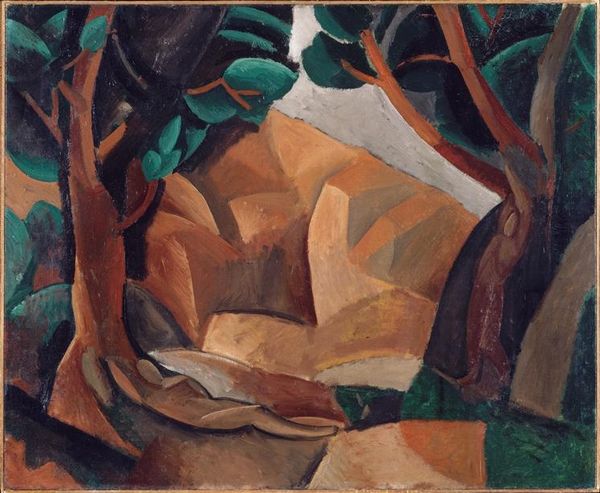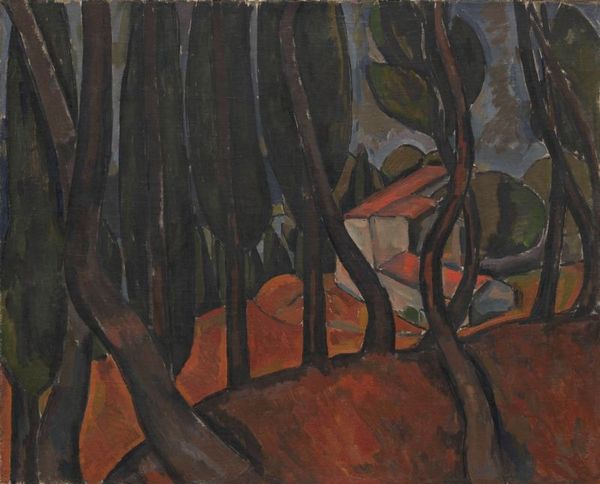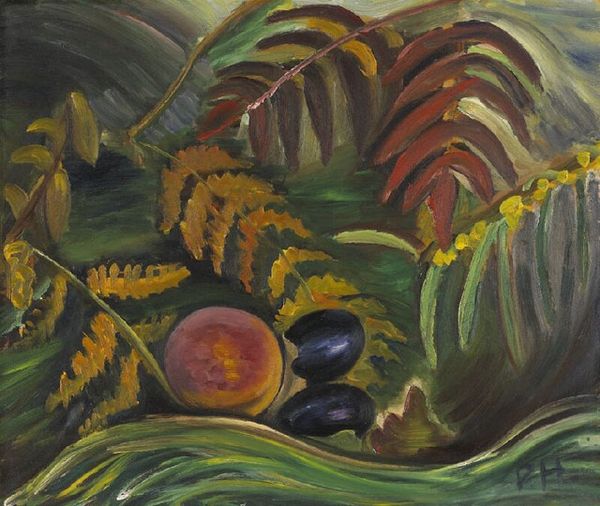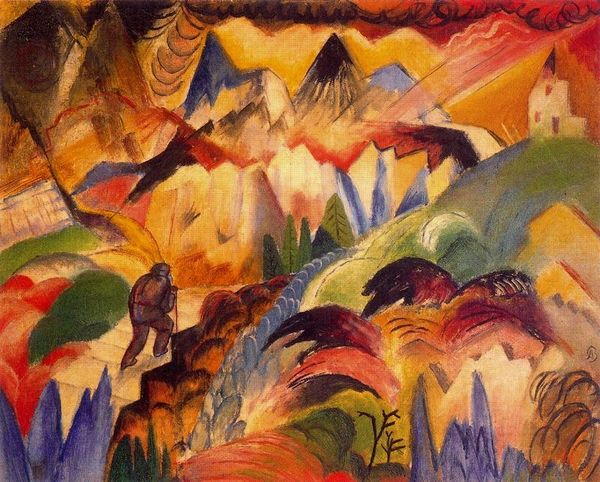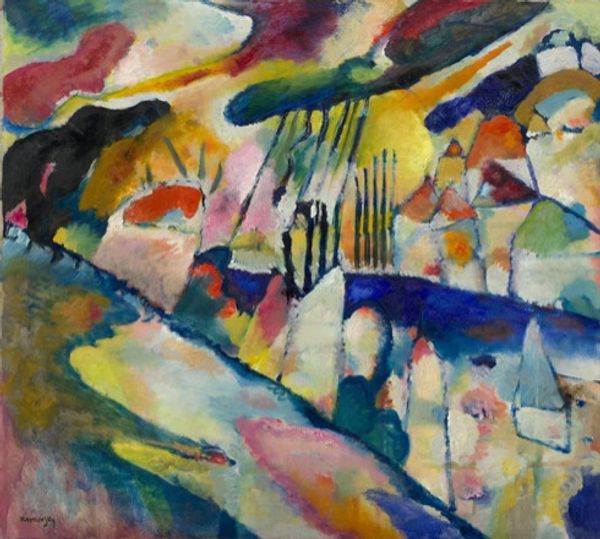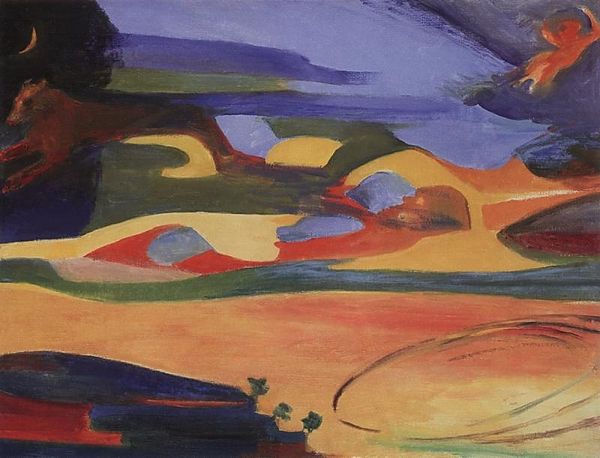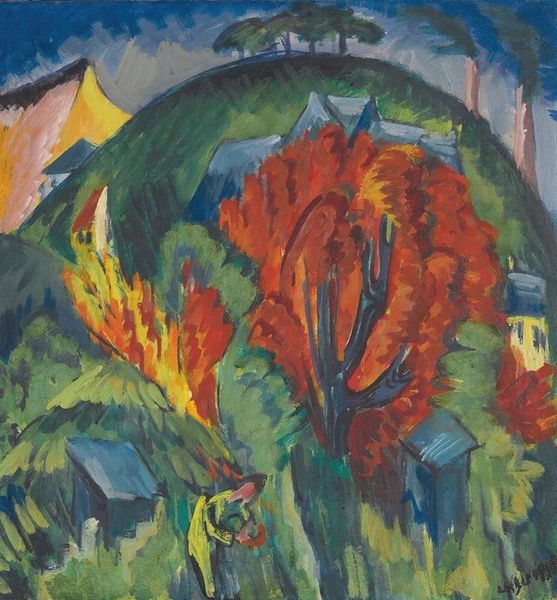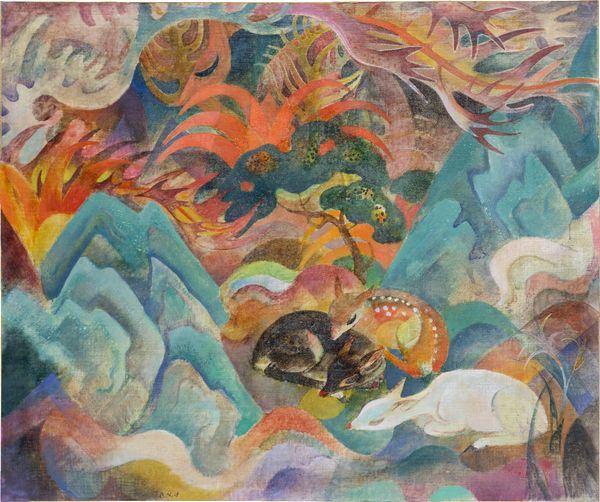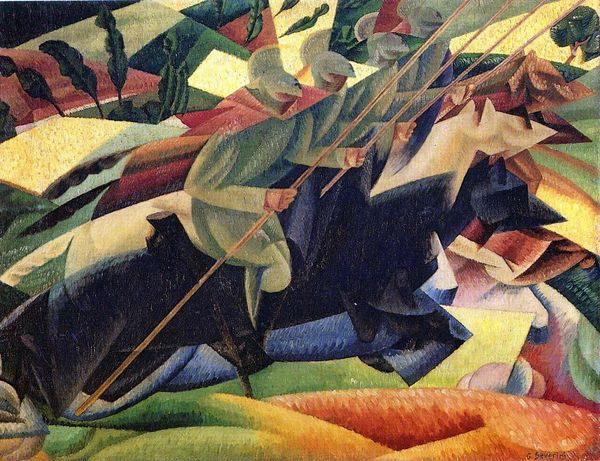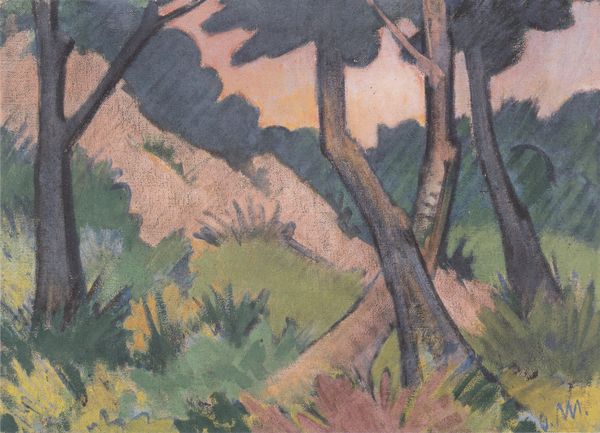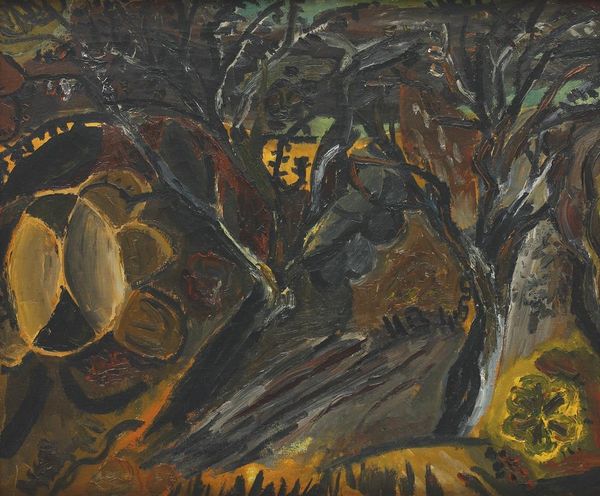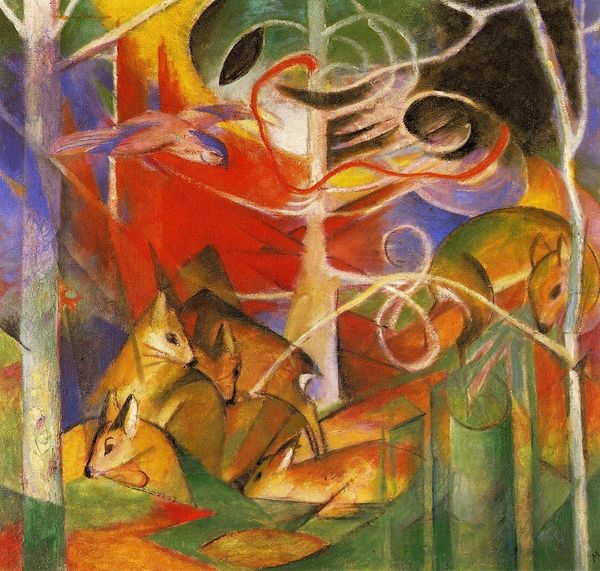
painting, oil-paint
#
tree
#
fauvism
#
fauvism
#
painting
#
oil-paint
#
landscape
#
leaf
#
figuration
#
handmade artwork painting
#
oil painting
#
geometric
#
expressionism
#
expressionist
Copyright: Public domain
Editor: Victor Palmov's "Variations After Gauguin," painted in 1910 using oil paints, immediately strikes me with its bold color palette and fragmented forms. It's almost aggressively Fauvist! What does this painting tell us about Palmov's relationship with Gauguin, and the broader art world at the time? Curator: It's crucial to see this piece within the historical context of early 20th-century Russia. The embrace of Fauvism, with its expressive and non-naturalistic colors, wasn't merely an aesthetic choice. It represented a challenge to academic conventions and a desire to connect with broader European movements while asserting a distinct national identity. What socio-political events of that time may have played a role? Editor: I know Russia was undergoing huge changes, with rising social unrest before the Revolution. Maybe Palmov was using this visual language to express a similar upheaval in the art world, shaking up the old order. Curator: Exactly! Palmov wasn't simply copying Gauguin; he was actively appropriating and transforming his visual vocabulary to reflect his own experiences and the revolutionary mood within Russia. Note how the geometric shapes suggest something is off-kilter; there's a kind of anxious instability expressed here that perhaps speaks to those tumultuous times. It makes you wonder how such art might have been perceived and understood by the viewing public in Moscow, right? Editor: Absolutely. So it's not just about art for art's sake; it’s deeply intertwined with what was happening culturally and politically. I'll definitely consider the social history of this piece from now on. Curator: Precisely. We have to think about how these paintings were created and displayed. In that case, we can consider the art world’s complex social networks that give the image its significance. I'm glad you’ve gleaned the vital relationship between the artwork and the artist’s cultural environment.
Comments
No comments
Be the first to comment and join the conversation on the ultimate creative platform.
